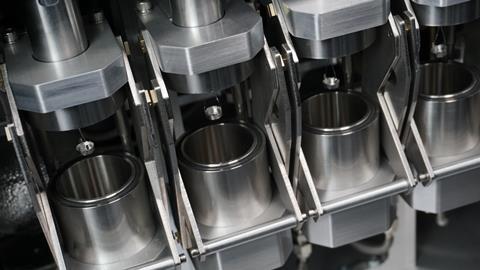Using the ubiquitous presence of water, you can get data on a whole range of chemical properties from your materials with dynamic vapour sorption, a technology optimised by Surface Measurement Systems. ‘We want to find out: what is the impact of moisture on your materials?’
When studying a material, one of the key questions people ask themselves is: how do I characterise it? There’s a myriad of materials characterisation methods available, but an option that is not yet as widely known is dynamic vapour sorption (DVS). The British company Surface Measurement Systems has been pioneering this technology for a few decades and is currently exploring opportunities to come to the Benelux.

But why would you want to use DVS? ‘What distinguishes our method is quite subtle’, says Professor Daryl Williams, Managing Director at Surface Measurement Systems and inventor of the technique. ‘It’s really a question of how you want to interrogate your material and what information you want to get out of it. Analytical techniques like NMR, X-rays or UV/Vis tend to tell us what material is present and where, which is helpful analytical information. But there’s a whole range of properties that are more chemical in nature that they leave out.’
Reaction enthalpy
To get those chemical properties, like heat of adsorption, diffusion energies or reaction enthalpy, you need to send in molecules to interrogate your material, Williams explains. ‘We do this by focusing on water molecules as found in air: humidity. They are everywhere, and how they react with materials is very important.’ To show the prevalence of water, Williams points out that most molecules in the air we breathe, like CO2, nitrogen, argon, want to be in the gas phase at room temperature. ‘But the one percent of water molecules in air wants to be a liquid, so they are very sticky. That’s the property we focus on, how does the sticky water molecule affect our client’s material, or in simpler terms: what is the impact of moisture or humidity?’
The company has a range of instruments that use adsorption science for its characterisations of solid materials. ‘Under solids we understand food, drugs, personal care items, wood, electronics or even semi-solids.’ From the materials you can extract two different classes of information, according to Williams. ‘Sometimes it’s very practical industrial information, like at what humidity level a material starts misbehaving. Other times we help with very fundamental scientific problems, like where are the water molecules located within the material.’
Aids drug
A practical example of adsorption science in action is found in a company that manufactures a new aids drug. ‘One of the processes involved the drug being granulated to powder, but they saw a lot of batch-to-batch variations. On some days granulation went fine, but on other days they couldn’t get it to work and had to throw it out. Based on our adsorption science we could help them to see how humidity influenced the granulation process, and predict which batches would be problematic.’
A similar case presented itself with Viagra, ‘the first pharmaceutical that has been tested with dynamic vapour sorption’. For all new crystalline drugs, humidity in different countries can significantly influence the crystal structures of the drug. Should humidity cause unexpected polymorphic changes, then this would be a major issue for the FDA because the same polymorph should be manufactured regardless of where we are in the world. ‘Water can be quite the enemy, so you have to treat it with respect.’

Expansion
‘It’s fair to say that the dynamic vapour sorption method is well known in the pharmaceutical and food industries, but not many people know about it in other sectors’, says Williams. ‘I believe DVS is being deployed at about 2000 labs globally, but many other labs, especially in academia and for porous materials, are not familiar with it.’ With a business approach of cooperation and collaboration, Surface Measurement Systems has been looking to expand in both Europe and the USA. ‘Although we have a British hub, I see ourselves as a European company, whatever politics might say’, says Williams with a smile. ‘With our expansion, we hope to come into contact with high level researchers and help them solve their challenges with dynamic vapour sorption.’













Nog geen opmerkingen